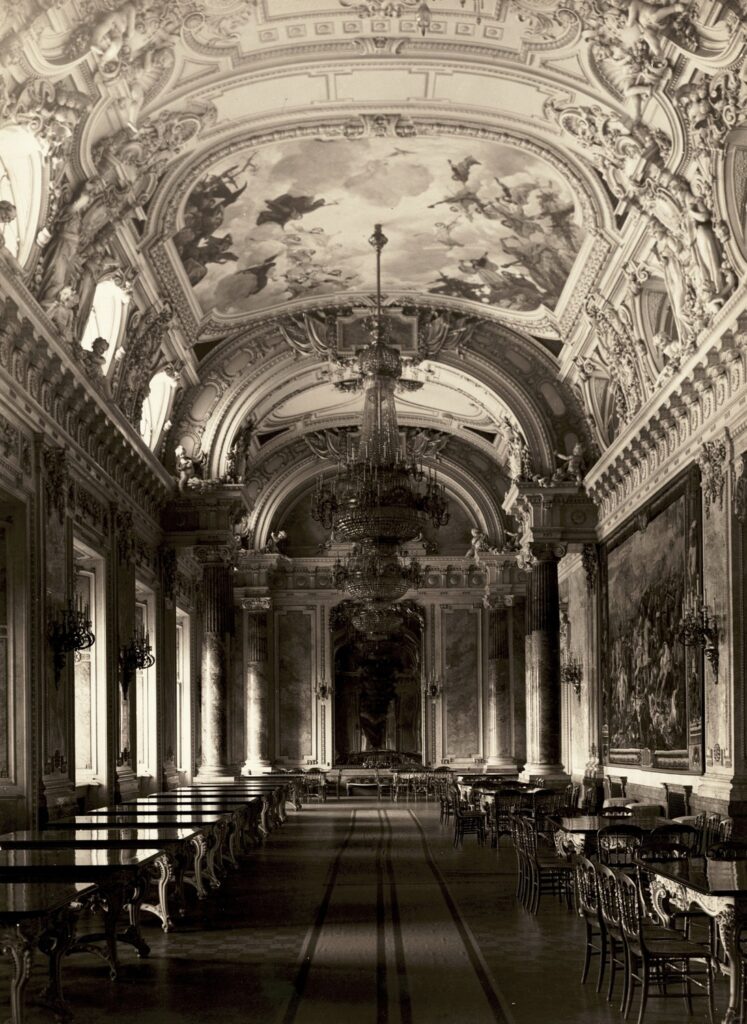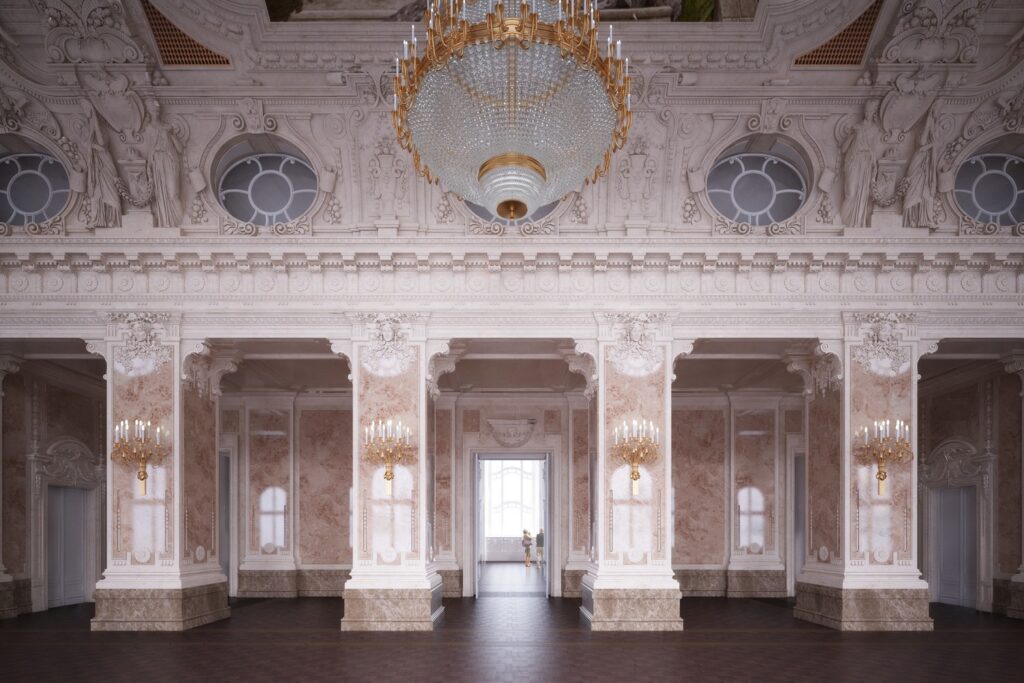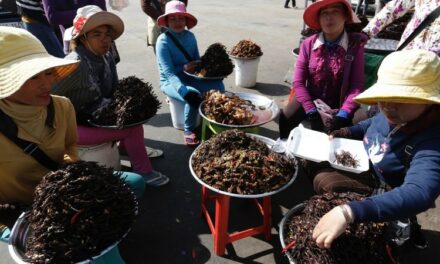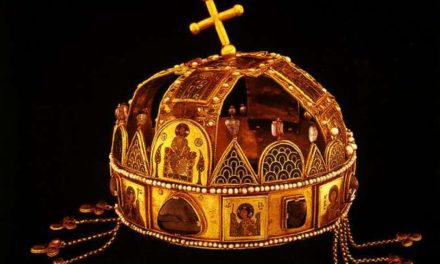During the Second World War, a bomb hit the area of the wonderful Buffet Gallery in the Buda Castle , which the communists then, instead of saving, stripped it of all its decorations and rebuilt it. Now, as part of the National Hauszmann Program, it will be restored to its original appearance.
At the beginning of the 20th century, according to the plans of Alajos Hauszmann, the new northern wing of the Royal Palace opening from Szent György tér (today's buildings A and B) was built. The palace is famous far and wide for its hundreds of meters of interconnected halls, the so-called enfilade, it was the second longest in Europe after the Palace of Versailles.

Archive photo of the Buffet gallery. (Source: Fortepan-77623)
The carriages of the guests arrived in the covered courtyard behind the main entrance opening from Szent György Square, and they could leave the northern wing building (today's building A) through the southern gate towards today's Hunyadi courtyard. The guests arrived in the capital's largest ballroom, with a floor area of more than six hundred square meters, through the cloakroom hall on the Danube side and the Munkácsy hall.
While the ballroom was located on the west side of the north wing (today's building B), the long, more than five hundred square meter banquet hall of the Buffet gallery was located on the Danube side, which was used for meals and receptions for the guests of the ballroom. Three large doors from the ballroom ensured a comfortable passage into the impressive room of the Buffet gallery separated by thick pillars.

Spectacular plan of the Buffet gallery - Source: National Hauszmann Program
From the columned terrace of the Buffet gallery, there was an unparalleled view of the Danube and the Pest side. It is interesting that Gyula Jungfer's company built two glazed pavilions on the terrace, which covered the spiral stairs leading from the ground floor to the upper floor. The stairs were designed for the direct connection of the kitchens and the buffet gallery, for the servers. Their work was also helped by a modern invention: food and drinks, as well as tableware, arrived from the kitchens on the ground floor to the nearby serving rooms with the help of electric food elevators.
It was designed by the most significant construction contractors and artists of the era
Alajos Hauszmann commissioned the most important construction contractors and artists of the era to decorate the interior of the Buffet Gallery. The stucco marble covering of the walls and pillars was made by Antal Detoma's company, the windows with semi-circular shutters and the interior doors were made by the carpenter Endre Thék. The decorative padlocks on the doors and windows were produced by Gyula Jungfer, and the inlaid parquet floors by Ödön Neuschloss. The 60-branched chandeliers hanging from the ceiling, decorated with galvanized gilding and glass ornaments, were beautiful products of the Magyar Fém- és Lámpaárugyár Rt., and the decorative cabinetry in the Buffet gallery was made by carpenter Imre Mahunka.

Passage from the Buffet gallery to the ballroom - Source: National Hauszmann Program
The Soviets took it away as war booty
Two large tapestries depicting the recapture of Buda, selected by Alajos Hauszmann from the imperial collection in Vienna, were placed on the western side wall of the room. The tapestries were made by the carpet weaving manufactory of Charles Mité around 1710. The southern tapestry depicted the defeat of the Turks attempting to liberate Buda, the northern tapestry the surrender of the Turks. The former tapestry was taken from the Royal Palace as Soviet spoils of war, and the work placed on the north side remained in private ownership.
The tempera paintings of the famous painter Árpád Feszty, who created the theme of the conquest in a grandiose circular painting, were placed in the three fields of the vaulted ceiling of the Buffet gallery. The theme of these three fields was the História written by the 16th-century Hungarian poet Albert Gergei about a prince named Árgirus and a fairy maiden, i.e. the fabulous story of Prince Árgyélus and Ilona Tündér Szép. By recalling the world of the archaic, Asian fairy tale, Feszty presented the ancient state of the origins of the Hungarians before the conquest, lost in the mists of the past.

The ruined gallery to the north. (Source: Fortepan-155531)
The communists rebuilt it
During the bombings of the Second World War and in the fire that incinerated the palace, the Buffet gallery was seriously damaged, its gypsum rabitz ceiling completely collapsed. Although the damage to the hall was not irreparable, it was stripped of all decorative elements during communism, but its spatial structure was broken up and rebuilt.
As part of the National Hauszmann Program, the Buffet gallery will regain its original beauty - read on the Facebook page of the National Hauszmann Program.
Front page image: View of the Buffet gallery facing south - Source: National Hauszmann Program












